The Kopfschützer (toque) was a widely issued item of WWII German winter gear. It was a sort of a knit scarf made in the form of a tube. It looked to the soldiers like something an old lady would wear, and because of this the common slang term for this item was “Oma,” meaning “granny.”
The German winter war manual “Taschenbuch für den Winterkrieg” includes the following illustration and instructions for how to wear two of these:
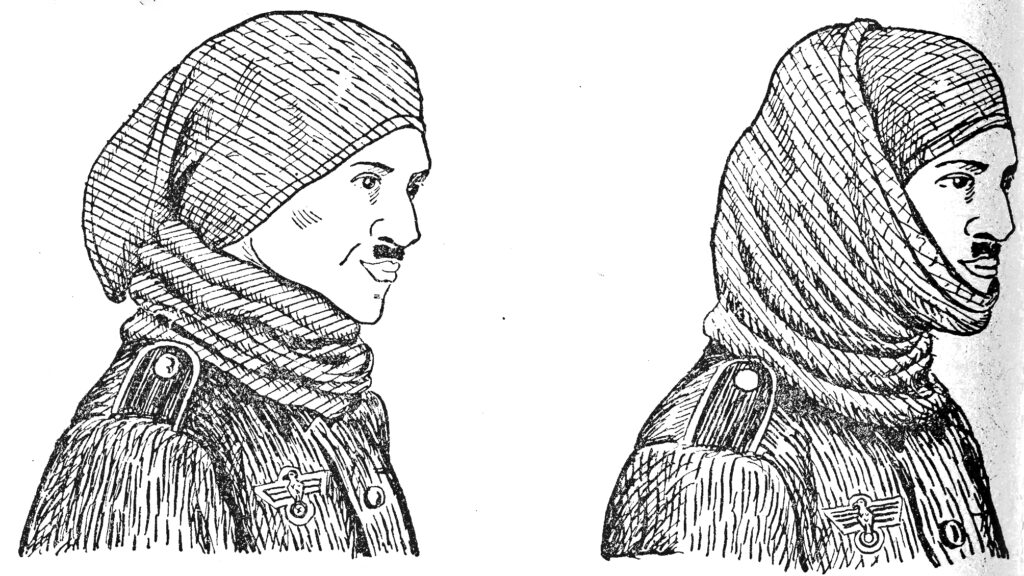
“Two toques can be worn most practically with the following method: Pull the first toque over the head and wear it around the neck. Pull the second toque over the back of the head, so that the ears are covered, and over the forehead down to the eyebrows. Pull the first toque that is around the neck from under to over, so that the back of the head, ears, throat, and chin are covered. Over this the field cap or helmet can be worn.”
Not every soldier was issued two of these and in fact, not every soldier was issued this item at all. The Kopfschützer was among the standard issue items listed on the equipment issue insert of the second pattern Heer Soldbuch that appeared in 1940, so it must have been a widely issued item by that time. We can look at the Soldbuch to see how many of these were issued. Often, it was just one.

Here is a selection of originals. The two on the left are unissued. The others, moth damaged, worn and repaired, were worn by German soldiers on the Eastern Front.
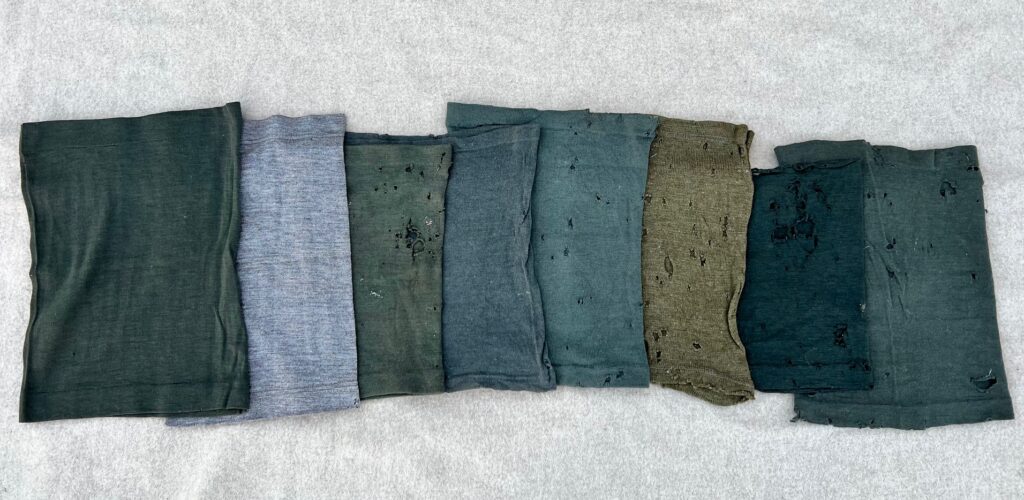
We see here a variety of colors and shades which is typical of all WWII German equipment made of textiles. They were not able to standardize color shades across the millions of items that were produced. Huge numbers of Kopfschützer must have been made. In our article on cleaned, repaired and reissued equipment in one Division in one year, we see that the 285. Sicherungs-Division collected and prepared for reissue 19,160 of these after the winter of 1942/43.
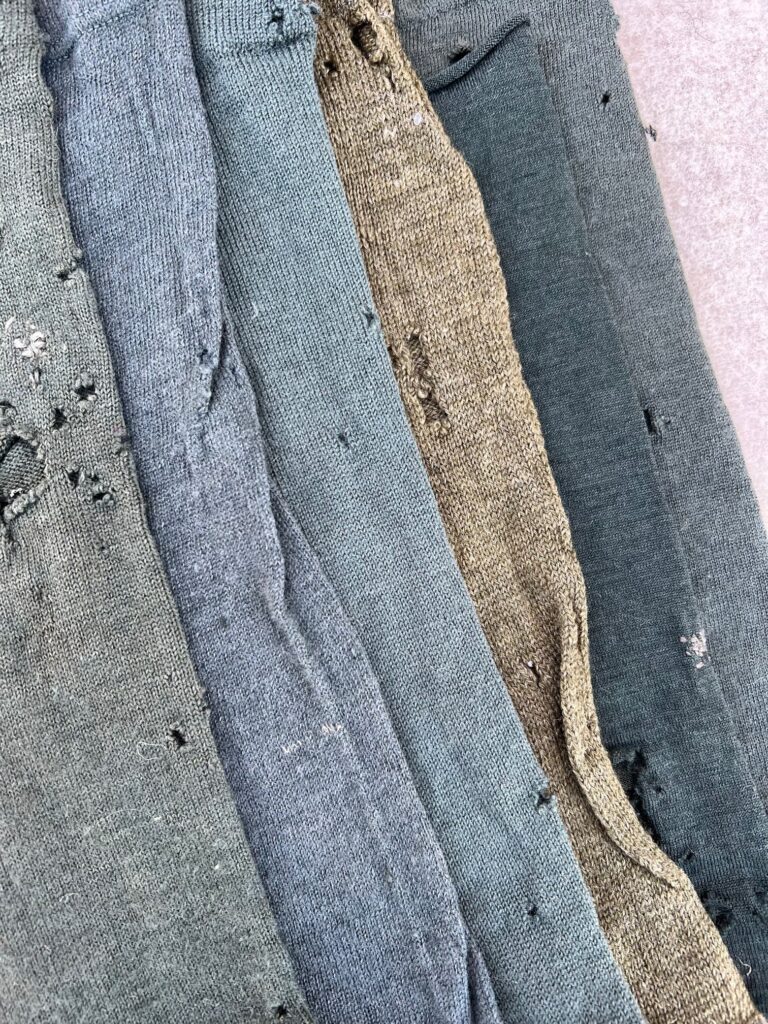
Not only the color but also the yarn size and therefore the thickness of the knit material varies. Some of these are almost as thin as a T-shirt while others feel more substantial.
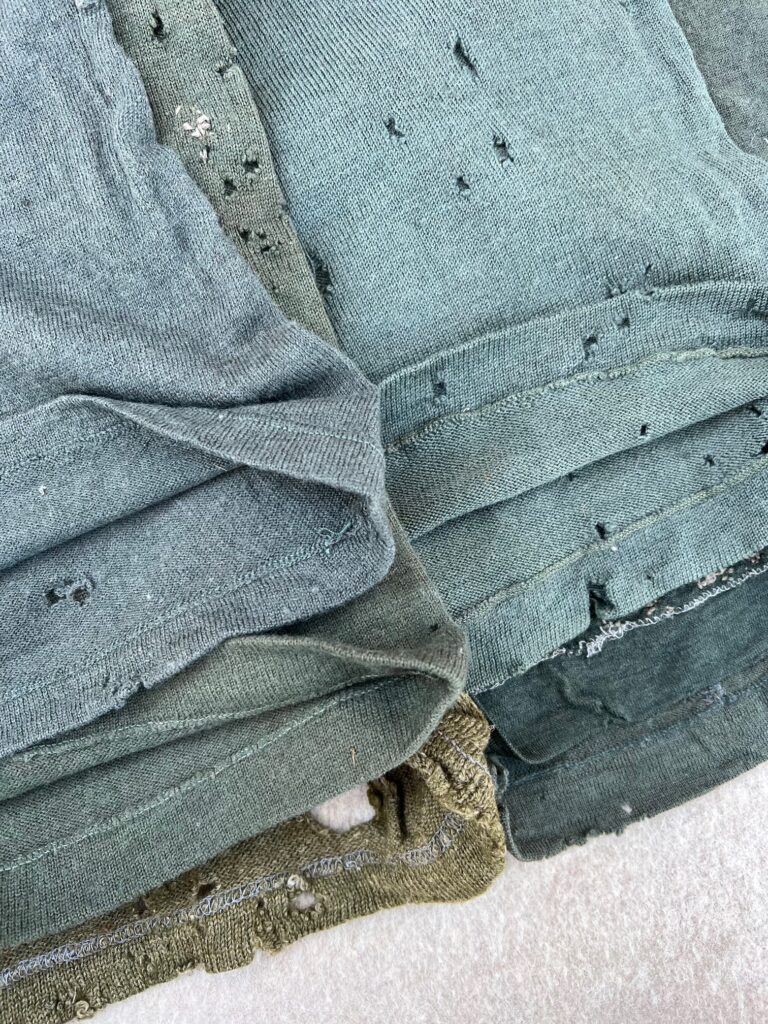
Other variables on these are the type of stitching used to finish them, and the size. The worn ones that are intact are mostly around 12-13 inches long. The unissued ones are 15 inches long. Perhaps washing shrinks them.

These unissued examples are marked with RB numbers, dating them to 1943 or later. None of the worn examples retain any kind of stamp.
The style of wear depicted in the winter war manual is commonly seen in wartime photos, but not every soldier in every situation chose to wear these items this way. This photograph from the book “Winter Uniforms of the German Army and Luftwaffe in World War II” by Vincent Slegers shows the toque used to cover the entire face up to the eyes in an extreme cold setting.
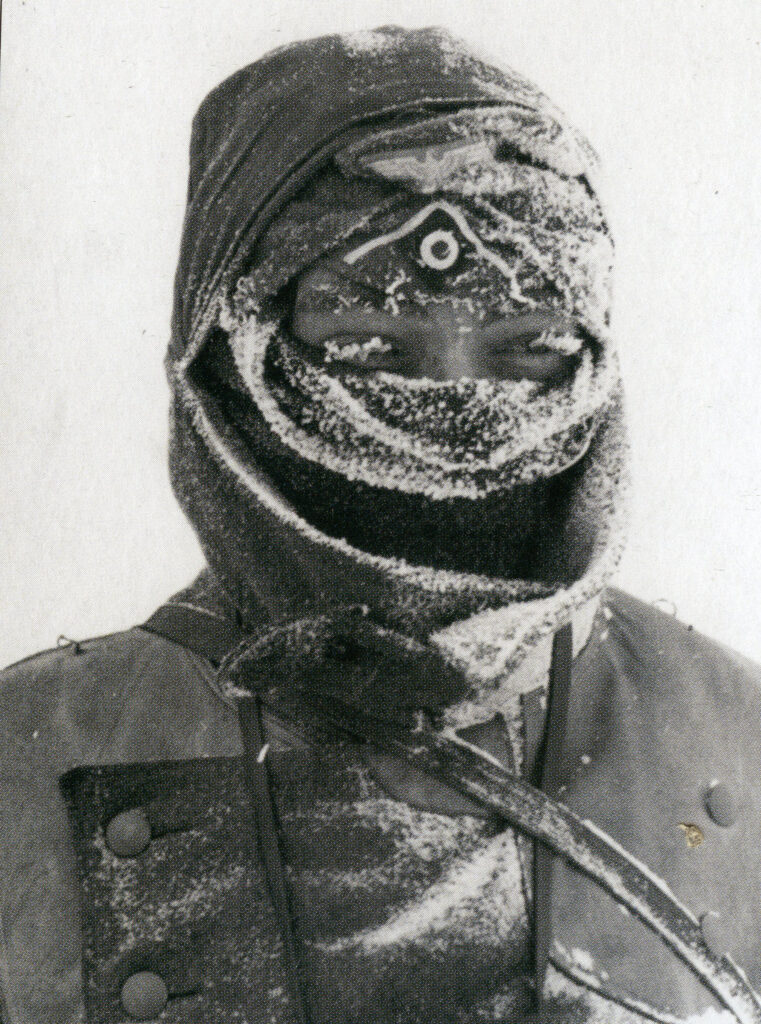
The Kopfschützer was not the only kind of knit winter item of this type that was issued. Here is another photo from the same book showing a soldier wearing a scarf.
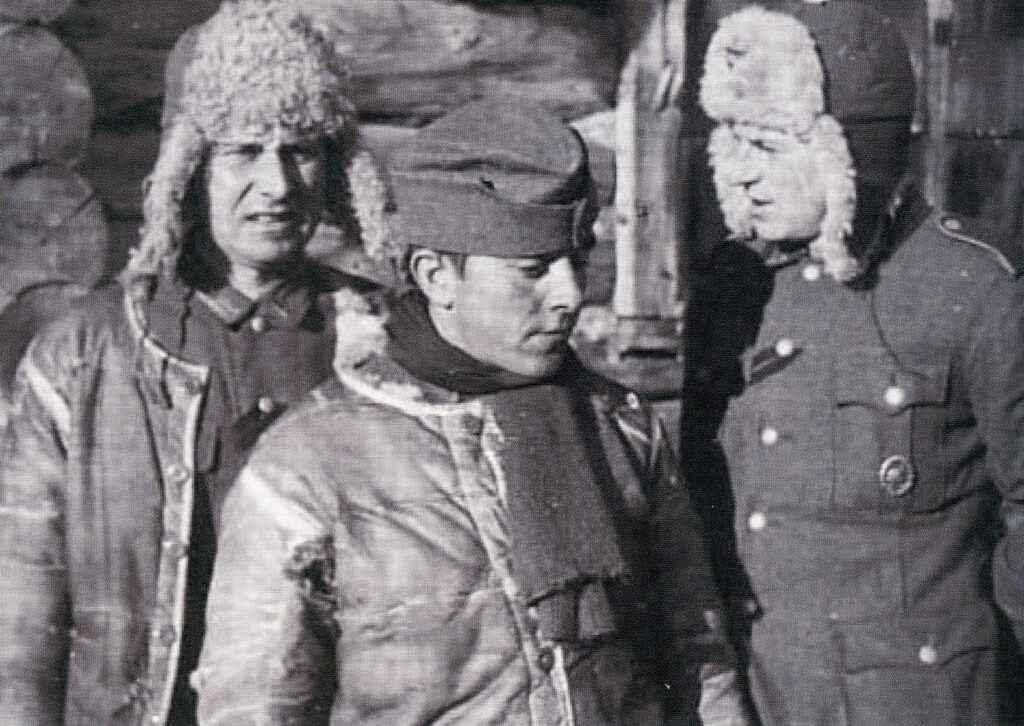
Some of the knit items issued to German soldiers were civilian ones. An account from the 3. Infanterie-Division in Russia in January 1942 recounted, “We had clothed as warmly as was possible. Wrist-warmers, gloves, scarves and mittens in all colors up to bright shiny yellow and red told of their origin of improvised donations from the homeland. But two pair of socks still let the icy cold through the boots. And the eastern wind also blew through the two pairs of underpants until we realized that ordinary newspapers, wrapped around feet and legs, served as excellent insulation. Although a scarf covered forehead and mouth, here and there a Kamerad soon showed white specks on his nose and cheeks.” Wear of civilian knit items with the Army uniform, whether issued or brought or sent from home, was permitted by regulation.